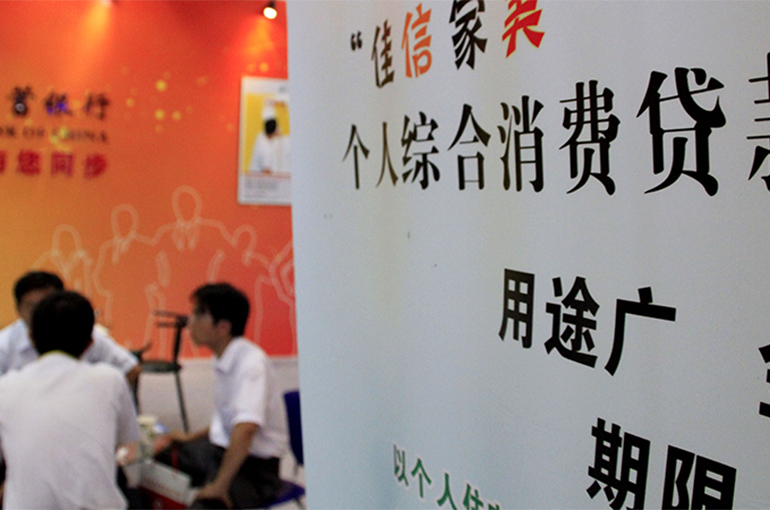 China’s Real Consumer Lending Rates Fall to as Low as 3% as Banks Vie for Clients
China’s Real Consumer Lending Rates Fall to as Low as 3% as Banks Vie for Clients(Yicai) Aug. 8 -- Real lending rates on consumer loans at some Chinese banks have fallen as low as 3 percent as they compete for customers amid a fall in demand.
Lending rates at several large state-owned banks and joint-stock banks in Beijing have fallen along with China’s benchmark loan prime rate, and the minimum consumer lending rate is generally between 3.5 percent to 4 percent without any preferential conditions, Yicai found. If a concession is made, the real rate may be lower than 3.5 percent.
The rate on the ‘flash loan’ offered by China Merchants Bank last month fell to 3.4 percent, a customer relationship manager said. A staffer at the Beijing branch of Shanghai Pudong Development Bank said borrowers who meet certain conditions for its Pudong Flash Loan product can enjoy a minimum 3 percent annual rate if they get a one-year interest rate coupon through the bank’s app this month.
Customers can “grab 100 coupons every Tuesday at 10 a.m., on a first-come, first-served basis,” the SPD Bank employee said.
Without a coupon, the Pudong Flash Loan rate is generally between 3.5 percent to 6 percent, and the most customers can apply to borrow is CNY200,000 (USD27,750), while employees of state-owned enterprises with stable job positions can apply in branch for as much as CNY500,000.
Smaller Banks Too
Small and mid-sized banks are also offering promotions, and many regional banks, including Bank of Suzhou, Beijing Rural Commercial Bank, and Guiyang Rural Commercial Bank, have recently come out with similar coupons for their consumer loan products, pushing real lending rates even lower.
The average minimum interest rate on consumer loans at national banks was 3.61 percent in May, down 17 basic points from April and 75 bps from a year earlier, according to data from the Rong360 Digital Technology Institute. It fell to 3.56 percent at state-owned banks and 3.64 percent at joint-stock banks, both under the one-year LPR of 3.65 percent at the time.
Commercial banks set their lending rates based on the central bank’s LPR, which is currently 3.55 percent for one-year corporate and household loans and 4.2 percent for those of more than five years.
For this round of consumer loan promotions, “in addition to mid-year promotion factors, the banking sector has abundant funds currently, and the cost of funds is lower than before,” a report published by the Rong360 Digital Technology Institute pointed out.
“In case of weak growth in the mortgage business, commercial banks hope to increase the scale of household lending by focusing on consumer credit,” the report added.
More Asset-Backed Lending
While banks are working hard on the consumer loan business, asset-based consumer lending by banks and consumer finance companies, the main issuers, has jumped since the second quarter to about CNY23.76 billion (USD3.3 billion) so far this year, Wind data shows, much higher than the CNY13.21 billion a year ago and CNY23.4 billion for the whole of 2021. Last year’s figure was CNY30.2 billion.
Consumer finance companies are still the main issuers of asset-backed consumer loans and the increased issuance by these firms shows that the business is growing well and may also reflect big demand from less qualified borrowers, stoking the risk of rising default levels, a senior researcher on structured finance told Yicai.
Since the start of the year, at least 25 banks have been punished for consumer lending business violations, including large state banks, joint-stock banks, and local small and mid-sized financial institutions, according to incomplete figures on the National Administration of Financial Regulation’s website.
The main reasons for the punishments included failure to perform due diligence in reviewing consumer loans and illegal flow of consumer loan funds into the property and capital markets.
Editors: Tang Shihua, Peter Thomas